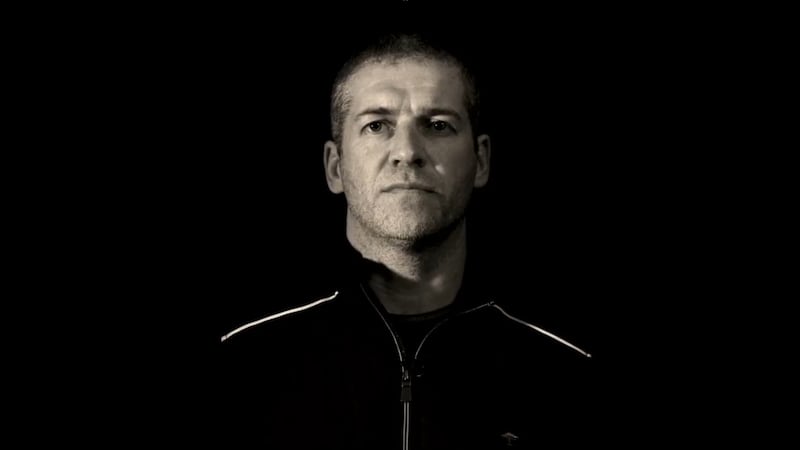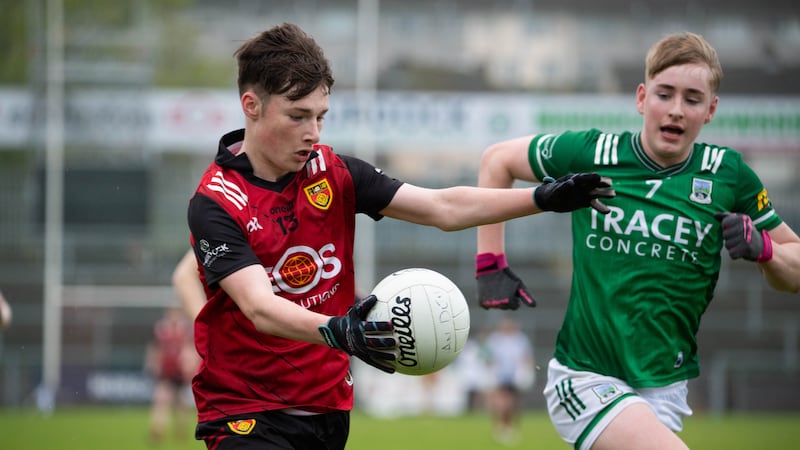JOHN Rafferty would have played senior football for Tyrone. In the hearts and minds of Killyclogher people, nothing was ever as certain.
He was captain of the club’s Tyrone minor championship-winning team in 2019 and had played U20 football for the county.
Partly it was the way he played but a lot was the way he led. As a young man he stepped into a senior changing room and drove standards.
“I’ve no doubt in my head we’d have won a championship with him as captain,” says Niall McKenna.
John was already graduated to the club’s senior team when six days after his younger brother Michael had won an All-Ireland at the grade last May, they played together at adult level for the first time.
Coalisland is no easy place to go but they embraced the challenge and embodied everything the club hoped would be their future.
Three months ago yesterday, on October 27, 2022, the car he was driving collided with a tractor at the Beragh turnoff on the A5 road.
It is one of the many black spots. The road is laced with them.
The night after John’s funeral, his clubman and Tyrone treasurer McKenna travelled down the same road to attend a monthly Tyrone county committee meeting with the express intention of thanking the clubs for their “wonderful” support.
Sitting in the auditorium, Grainne Donnelly was to his left. She had lost her brother to an accident on the road. Dermot Carlin was out on the field coaching the U20s. He had lost his mother-in-law.
Damien Corrigan was right in front of him.
Damien had left his son Nathan to Sixmilecross to meet his friends on Boxing Day evening in 2021.
When his wife Kate got up in the morning, she saw a text from her sister about a bad accident at a junction 100 yards from the Corrigan’s house. She texted Nathan ‘where are you?’
“Within seconds the doorbell rang. I could see through the glass in the door the reflective uniform. I heard those words ‘are you Mrs Corrigan?’ and I just knew then. I pleaded with them to tell me it wasn’t right, it wasn’t true, he wasn’t dead,” Kate told the audience in Garvaghey on Monday night.
Nathan Corrigan was killed alongside his friends Petey McNamee and Peter Finnegan when their car collided with a lorry.
Nathan played for Beragh and Peter with Clogher.
On the wall in Tyrone’s centre of excellence is displayed the crests of each of the 56 clubs that make up the county’s GAA scene.
From the first 44 of them on Monday was hung a set of car keys. Each key represented a life lost on the A5 road since the NI executive first approved plans for a new road to be built.
That was on July 17, 2007. Five thousand, six hundred and seventy-four days have passed and not a single yard of tarmac has been laid.
It’s not an upgrade to the existing road that was approved, rather the construction of a new one.
Niall McKenna this week led the launch of a new A5 pressure group made up of people from within Tyrone GAA. Their launch packed the auditorium and the main foyer in Garvaghey. It was attended by bereaved families, politicians, prominent GAA figures and representatives from local rugby, soccer, hockey, athletics, golf and cycling clubs.
“The road doesn’t discriminate” he said, telling them they will be always be welcome through the doors of Garvaghey.
What he terms a “micro-group” of people with money to finance legal support against them has obstructed the project. Planning permission has been overturned three times.
The cost of building the road would be an estimated £1.2 billion.
The cost of not building the road will be the knock on the door, the wailing cries of families, the slow march behind coffins, the silence from the empty chair on Christmas Day.
The A4 was the old road between Ballygawley and Dungannon that was equally notorious. Since a new dual-carriageway was opened to replace that road in November 2010, deaths on the A4 have been reduced by 97 per cent.
Kevin Hughes and his family had to endure it not once, but twice.
Paul was five years older than him. The club’s full-back and secretary, he was on his way to play a friendly for Killeeshil against Derrylaughan on the evening of Saturday, August 30, 1997.
Kevin was on his way to Tyrone minor training at the same time. He got to the Cabragh Filling Station and saw the traffic jam. Knowing the back roads, he turned off.
His friends had agreed to meet in the pub afterwards to watch a game. He walked into Quinn’s and people fell into a stunned silence. Carmel Quinn came over and asked: ‘Hub, what are you doing here? Have you not heard? Paul’s been in an accident.’
She took him to the hospital in Dungannon. Paul had already passed away by then.
Four years later, Monday, November 26, 2001, he was in Quinn’s again, waiting for the taxi to come and take him a few lads off to play for the pool team.
The taxi man called the bar and asked to speak to Kevin, who was 21 at the time. Told him he better come up Killymaddy, barely 20 yards from where Paul was killed.
His sister Helen was three years older than him.
“Somebody was trying to reverse out, there wasn’t proper access, no egress on or off the road, and they reversed out in front of Helen’s car. It was Helen’s car, her friend was driving,” he told the crowd on Monday night.
“We went up to the car and she was just lying there in the passenger seat, just crushed between the seat and the door.
“You’re just thinking this can’t be happening again. I got into the car with the priest and up to home, into the front living room, Mum and Dad watching soaps.
“I couldn’t bring myself to tell them. Fr Crawley told them the news. You can just imagine what it was like.”
Twenty-two years on, you wonder how he has the strength to tell that story, to get those words out.
It comes from the same place that a lot of the people in the room are coming from though. There are far too many others with similar stories. He recalls the McGeary brothers, 19-year-old Ciaran and 14-year-old Michael, who were killed just weeks later, the day before their native Galbally were to play Errigal Ciaran in a senior championship final.
And Nicola Murray, who was killed when a lorry crashed into the back of the school bus on which she was travelling as it turned into St Mary’s PS in Cabragh in February 2008.
The driver of the lorry was spared prison because Nicola’s parents pleaded for leniency, absolving him of guilt in their eyes and saying that it “would not have benefited our family for him to spend some time in jail. He didn’t set out to cause death or injury”.
When the A5 was built half a century ago, it wasn’t designed to deal with the volume and make-up of the traffic it now sees. Heavy haulage meets agricultural meets inexperienced drivers and elderly locals pulling out of their driveways that had a main thoroughfare foisted upon them.
At the bottom of the hill from Garvaghey itself, there’s a staggered crossroads, an entrance and exit to the busy Kelly’s shop and restaurant, car parks on either side of the road, all on top of each other.
It is a catastrophic mix and the big fear among people involved in Tyrone GAA is that some day, a young person will be killed going to or coming from training.
“It is only a matter of time,” says Niall McKenna.
A new road has been continually obstructed by people whose motivations are unclear.
Between the scheme’s original approval in 2007 and February 2012, 16 people were killed on the road.
From 2012 until 2017, the plans were embroiled in legal challenges. Three times in five years it led to protracted court cases. In December 2018, the decision to proceed with the scheme was quashed by a judge.
Eleven more people lost their lives in that time period.
Seventeen more have been killed on the A5 since.
How many more people have to die?
Enough is enough.








